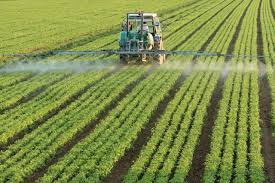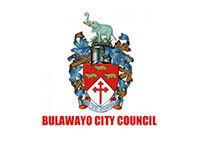
GOVERNMENT has revised the growth of the agricultural sector upwards by 8,3 percentage points to 21,1% this year owing to the positive impact of the La Niña weather phenomenon.Initially, the government had projected a growth of 12,8% this year for the sector.This is from the poor 2023/24 agricultural season, which was greatly affected by an El Niño-induced drought.“The agricultural sector is projected to grow by at least 21,1% in 2025, a substantial upward revision from the initial projection of 12,8%,” Finance, Economic Development, and Investment Promotion minister Mthuli Ncube said as he delivered the 2025 Mid-Year Budget and Economic Review last week.“The surge is largely attributed to the positive impact of the La Niña phenomenon, which enhanced production across key crops, including tobacco, maize and traditional grains.”He said the Second Round Crop and Livestock and Fisheries Assessment (CLAFA 2) undertaken by the Lands, Agriculture, Fisheries, Water and Rural Development ministry in collaboration with Zimbabwe National Statistics Agency projects significant increases of output in almost all crops.“However, the late onset and cessation of rains, planting of early maturing varieties, as well as other post-harvest losses have the potential to compromise the yields,” Ncube said.“In complementing government initiatives to improve food nutrition and security in the country, Development partners disbursed US$5,2 million through various agencies for interventions aimed at boosting agriculture production and enhancing resilience to climate change shocks.”However, he said a notable number of projects in the sector were still in inception stages and expected to disburse as the year progressed.“Development partners supported the enhancement of resilience of vulnerable agricultural livelihoods in southern Zimbabwe and biodiversity and ecosystems under the Green Climate Fund intervention, Climate Adaptation Water and Energy Infrastructure Programme, Agriculture Value Chain Enhancement Project and Zimbabwe Resilience Building Fund (ZRBF),” Ncube said.“A successor ZRBF II was also launched in April 2025 following the successful implementation of phase 1. ZRBF II is expected to benefit 2,5 million people across three provinces, namely Manicaland, Masvingo and Matabeleland South.”During the 2024/25 agricultural season, CLAFA 2 projected maize output at 2,3 million tonnes.In addition, the report estimated small grain output of 634 650 tonnes comprising 436 784 tonnes of sorghum, 188 261 tonnes of millet and 9 605 tonnes of rapoko.“In total, 2,9 million tonnes of grain are projected to be harvested for the 2024/25 agriculture season. This output is more than adequate for the national requirement of 2,2 million tonnes for both human and animals, leaving a surplus of over 700 000 tonnes,” Ncube said.“Government through GMB [Grain Marketing Board] targets to procure at least 100 000 tonnes for replenishment of strategic grain reserves at a price of US$376/tonne, payable 70% in US$ and 30% in local currency.“So far, GMB has managed to procure a total of 25 812MT (metric tonnes) valued at US$7,3 million and ZiG83,1 million of grain.”In terms of livestock production, the favourable 2024/25 rainfall season improved the availability of water and pastures.Consequently, the national herd of various animals is estimated to have grown. For example, the beef cattle national herd grew 0,4% to 5 741 397 last year from 2023, dairy cattle (8,7% to 65 659), and sheep (0,5% to 746 277).However, in terms of goats, this was down 4% to 4 883 669 last year from 2023, while piggery was down 0,4% to 301 747.“Consequently, beef production is projected to grow by 5% to reach 107 000 tonnes in 2025, up from 104 000 tonnes recorded in 2024,” Ncube said.“Similarly, the Zimbabwe dairy industry projects milk production to grow by 15% in 2025.”
Government seeks to increase irrigable land from 217 000 hectares (ha) in 2023 to a target of 350 000ha by 2025.“This will be achieved through resuscitation and modernisation of non-functional irrigation schemes and development of new irrigation schemes utilising existing dams,” Ncube said.“In this regard, ZiG94,4 million was expended on the rehabilitation and development of irrigation schemes covering 4 000ha.”






